Drawing after a detail from the Maciejowski Bible circa 1250 Pierpont Morgan Library New York City, USA
$22.95
All Revival Clothing Patterns, both digital and print book formats, are FINAL SALE and not eligible for exchange or refunds
A few things to consider before you purchase one of our patterns
***All Revival Clothing Patterns, both digital and print book formats, are FINAL SALE and not eligible for exchange or refunds***
Please note: our patterns are adapted from our original, industrial grade production patterns so they contain only the minimal markings used by professional production sewers and are intended for intermediate and advanced sewers. The instructions are a basic guide and written with the intent that the user understands patterns and clothing construction terminology and techniques. That said, we have used these patterns for many years in actual production, so they are vetted in terms of sizing and accuracy.
For the Printed Version:
This comes in the form of a spiral bound book with instructions followed by the pattern pages. To use, you cut out the pattern pages and tape them together for a full size pattern. For the sized patterns, all sizes are nested together. If you want use more than one size, you will need to trace the individual size onto semi transparent paper, like tracing paper, and use that to cut out the fabric.
For the digital version:
All Revival Clothing Patterns, both digital and print book formats, are FINAL SALE and not eligible for exchange or refunds
A note about sharing – PLEASE DON’T SHARE THESE FILES, copy the pattern or use it to produce items for sale. We are a small company, hoping to share our experience and ideas with you, in order to help you make beautiful, authentic, well-fitting medieval clothing. This pattern is intended for personal use by a single customer and we have priced it accordingly. Abuse of the user agreement will negatively affect our ability to continue to provide this service. We have spent a couple decades researching and perfecting our patterns and we are trusting you to use them in the spirit they are intended. So please, honor our single user policy and help us continue to serve the greater re-enactment community.
Size Chart
Note: Sizing on our Braies is very general because they are such loose fitting garments. In general terms we recommend Small for up to a 44″ waist, Medium for up to a 56″ waist and for those who prefer a looser fit in the waist. In general, the looser, larger fit is better for earlier portrayals while braies get smaller and more fitted toward the turn of the 15th c. The Large usually works better for those with a 48″ waist and above and for larger thigh circumference. Both the Large and the X-Large work well for those who like the very full look, as it is represented in some earlier medieval artwork. All sizes are generously cut in the length so they stay tucked into chauses.
Size | Recommended Waist Measurement | Ungathered Waist | Max Thigh Size | Length |
Small | up to 44″/112 cm (or for a slimmer fit) | 48″/122cm | 24″/61cm | 22″/56cm |
Medium | 44″/112 cm to 56″ / 142 cm (or for a looser fit) | 60″/152cm | 24″/61cm | 23″/58cm |
Large | 48″/122 cm to 74″/188 cm (or for the fullest fit and/or a very gathered waist look) | 78″/198cm | 30″/76cm | 26″/66cm |
For the majority of the Middle Ages, the idea of trousers was simply unknown. Rather, men (and possibly women) of all classes wore a pair of baggy drawers under their normal clothing. Laced to these braies was a pair of tight-fitting hose or chauses to cover the legs. Normally made of linen or wool, they are best cut on the bias (diagonal) across the warp and weft to increase their elasticity. While some hose stopped at the ankle, others incorporated feet, and some even had leather soles stitched on to take the place of shoes. These chauses were often further secured beneath the knee with a simple wool or leather garter. While braies are always depicted as being white, chauses came in a variety of colors.
Our braies are based on surviving historical artwork. Like many other elements of clothing, braies went through some substantial evolution in the late Middle Ages. Artwork from the 13th and early 14th centuries depict massive, voluminous shorts, while by the 15th century, these had been reduced to the medieval equivalent of briefs. Our braies depict a moment in time in this evolution. Made of a stout linen, they are mid-thigh length and full, but trim enough to avoid causing bunching or unseemly lines and bulges when worn under a cotte, cotehardie or gown. Placing the lacing point for the chauses at the drawstring allows them to pull against the hips, reducing the drag on the braies, making sure your pants stay up when you want them to. A final advantage to historical underwear that is often overlooked is comfort. The relaxed fit of the braies is of great comfort when lounging around camp, and in hot weather, the chauses can be rolled down and worn around the ankles, for the medieval equivalent of shorts.
How to point your Braies and Chauses
Our braies are designed to have the chause pointed to the drawstring at the waist rather than the fabric of the braies themselves. This method puts less stress on the the linen of the braies as well as lessening the pull of the chause points on the top of the braies which tends to drag the waist down toward the hips. It also gives you complete flexibility on how high or low you can point you chauses to your braies. When you first get your braies you will need to adjust the waistband to your liking as well as the part of the drawstring which you will use to point the chauses to. |
To adjust your braies and chauses: Put on your braies and tighten the drawstring to the point where it feels comfortable on your waist and the fabric at the waist is distributed evenly on all sides, tie it loosely leaving a little slack. Use the slits at the side of the waistband to pull out a portion of the drawstring on each side – this will pull some of the drawstring from the center to the sides, let that happen. Once you’ve adjusted it so that you have a small loop at each side and it fits comfortably on your waist, you can tie the drawstring in a tighter knot in front. Tie a knot at the base of each loop you’ve pulled out to keep the loop from retreating back into the waistband. These are the loops you use to tie your chause points to. You can point your chauses to this loop with either a bow or a knot (its show with a bow in the sketch). The loop extending from the braies can be made longer for extra length in the fit of your chauses, or left short for higher fitted chauses. Lastly, once you have the braies waist fitting well, you can trim the extra long drawstring to a desirable length (being sure that you leave enough length to stop the drawstring from being lost in the waistband during washing) and finish the ends with knots to keep it from fraying.

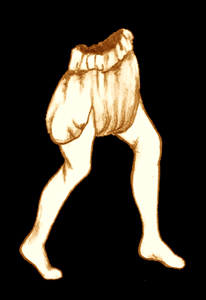
Drawing after a detail from the Maciejowski Bible circa 1250 Pierpont Morgan Library New York City, USA

Drawing after the Album of Villard de Honnecourt circa 13th c. Bibliotheque National Paris, France
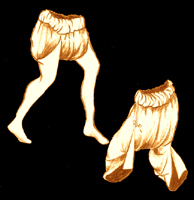
Drawing after the Maciejowski Bible circa 1250 Pierpont Morgan Library New York City, USA
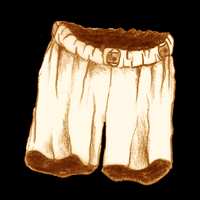
Drawing after Le Parement de Narbonne circa 1375
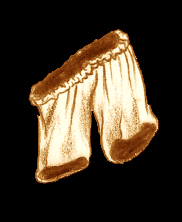
Drawing from a details of Grandes Heures de Rohan circa 1415 Bibliotheque National Paris, France

Drawing after an illuminated manuscript circa 14th c. Roy. MS.16 Gvii in the British Museum, London, England
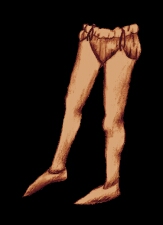
Drawing after an Hungarian illuminated chronicle fol.41 circa 1360 in the National Szchnyi Library, Budapest, Hungary
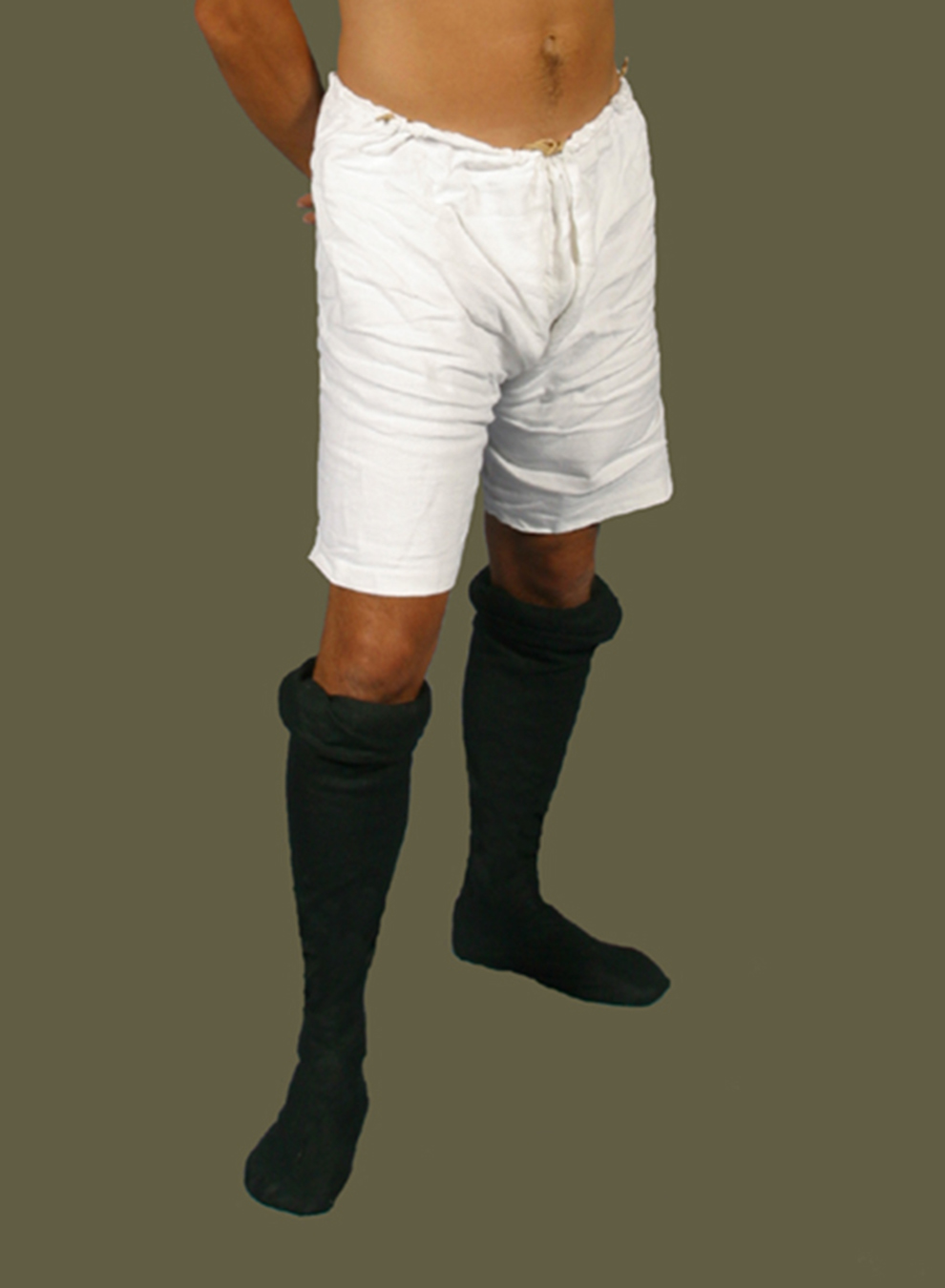
Here we have an example of Chauses that have been rolled down instead of tied to the Braies. This is often done for comfort due to overheating!
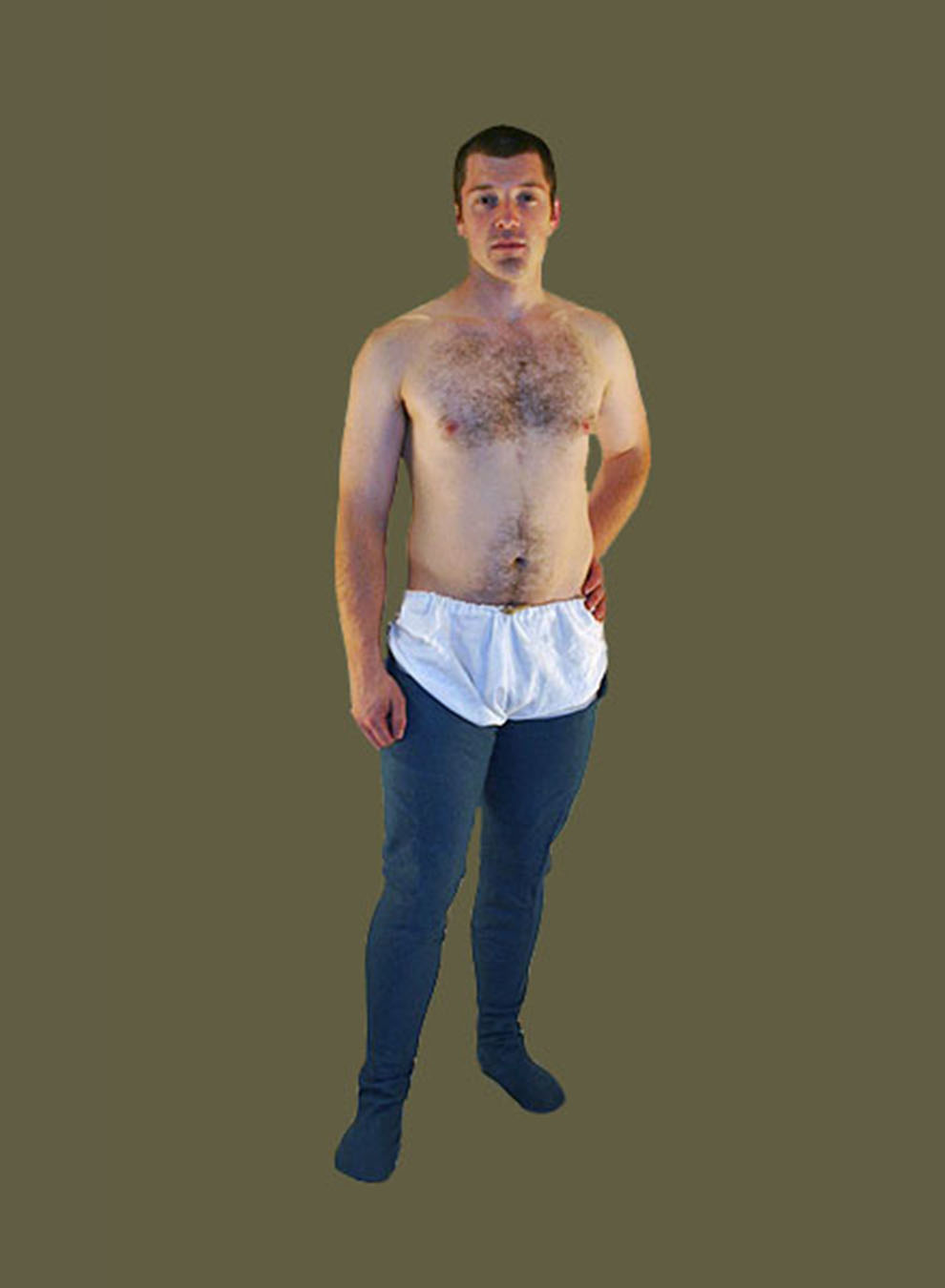
This gentleman is only partially dressed! He is seen with only his Braies and Chauses! Avert your eyes for the sake of modesty!
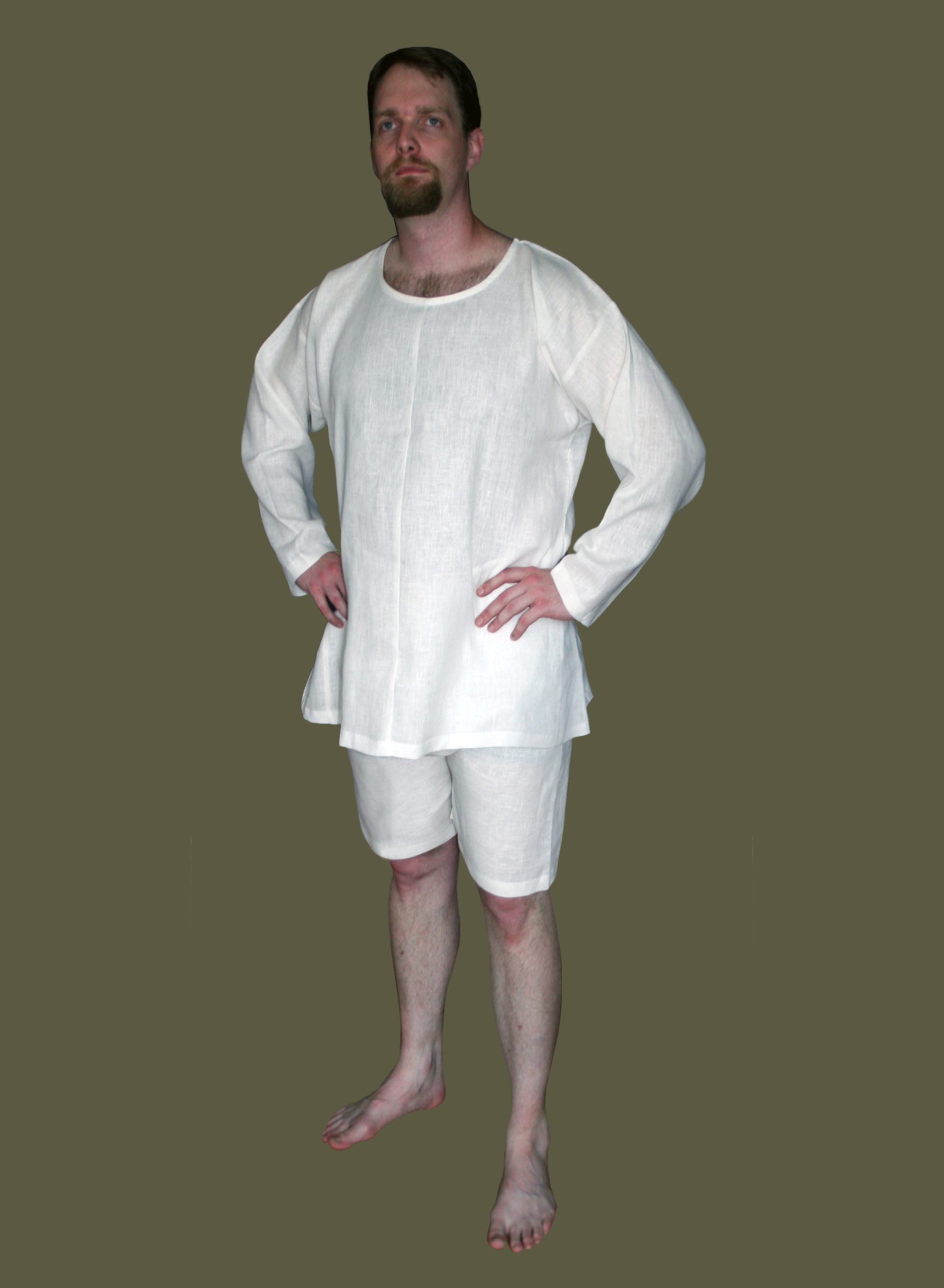
Here our Slim Cut Shirt is paired with a set of 14th C. Braies. These undergarments are essential to any outfit of the time!
You must be logged in to post a review.

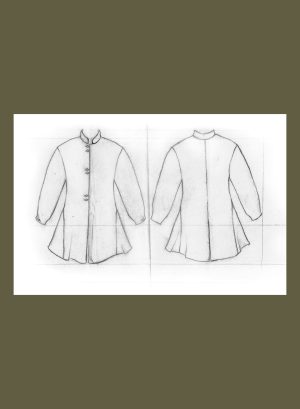
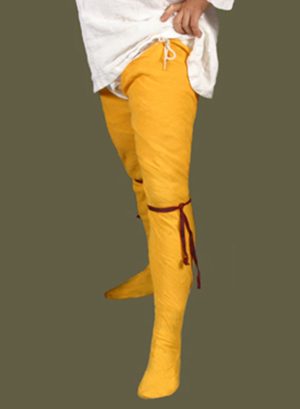
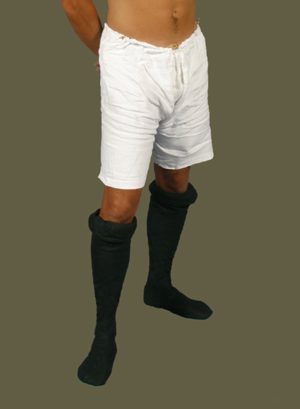
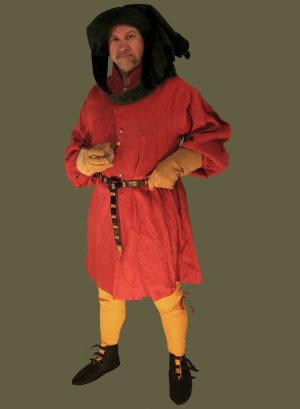
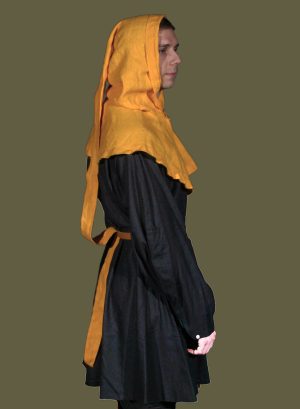


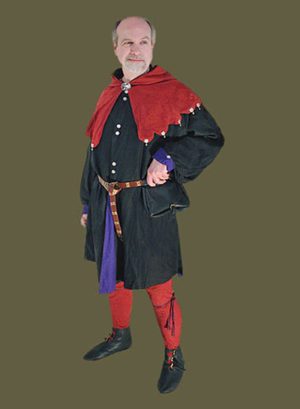
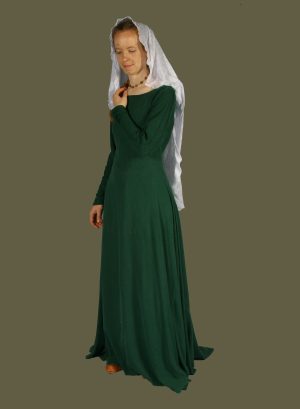
Reviews
There are no reviews yet